- Home
- Terry Pratchett
Terry Pratchett - The Science of Discworld Page 2
Terry Pratchett - The Science of Discworld Read online
Page 2
’Wave to us’, said the Senior Wrangler. ’We’ve got quite a good telescope.’
Ponder stared at the empty glass, and readjusted his mental sights once more.
’Er, no,’ he said. ’The fuel has to go inside the reacting engine, you see. And then ... and then ...’
He gave up.
’The magic goes round and round and it comes up under the boiler that we have plumbed in and the university will then be lovely and warm,’ he said. ’Any questions?’
’Where does the coal go?’ said the Dean, ’It’s wicked what the dwarfs are charging these days.’
’No, sir. No coal. The heat is ... free,’ said Ponder. A little bead of sweat ran down his face.
’Really?’ said the Dean. ’That’ll be a saving, then, eh, Bursar? Eh? Where’s the Bursar?’
’Ah ... er ... the Bursar is assisting me today, sir,’ said Ponder. He pointed to the high gallery over the court. The Bursar was standing there, smiling his distant smile, and holding an axe. A rope was tied around the handrail, looped over a beam, and held a long heavy rod suspended over the centre of the reaction engine,
’It is ... er ... just possible that the engine may produce too much magic,’ said Ponder. ’The rod is lead, laminated with rowan wood. Together they naturally damp down any magical reaction, you see. So if things get too ... if we want to settle things down, you see, he just chops through the rope and it drops into the very centre of the reacting engine, you see.’
’What’s that man standing next to him for?’
’That’s Mr Turnipseed, my assistant. He’s the backup fail-safe device.’
’What does he do, then?’
’His job is to shout "For gods’ sakes cut the rope now!" sir.’
The wizard nodded at one another. By the standards of Ankh-Morpork, where the common thumb was used as a temperature measuring device, this was health and safety at work taken to extremes.
’Well, that all seems safe enough to me,’ said the Senior Wrangler.
’Where did you get the idea for this, Mister Stibbons?’ said Ridcully.
’Well, er, a lot of it is from my own research, but I got quite a few leads from a careful reading of the Scrolls of Loko in the Library, sir.’ Ponder reckoned he was safe enough there. The wizards liked ancient wisdom, provided it was ancient enough. They felt wisdom was like wine, and got better the longer it was left alone. Something that hadn’t been known for a few hundred years probably wasn’t worth knowing.
’Loko ... Loko ... Loko,’ mused Ridcully. ’That’s up on Uberwald, isn’t it?’
That’s right, sir.’
’Tryin’ to bring it to mind,’ Ridcully went on, rubbing his beard. ’Isn’t that where there’s that big deep valley with the ring of mountains round it? Very deep valley indeed, as I recall.’
’That’s right, sir. According to the library catalogue the scrolls were found in a cave by the Crustley Expedition -’
’Lots of centaurs and fauns and other curiously shaped magical whatnots are there, I remember reading.’
’Is there, sir?’
’Wasn’t Stanmer Crustley the one who died of planets?’
’I’m not familiar with -’
’Extremely rare magical disease, I believe.’
’Indeed, sir, but -
’Now I come to think about it, everyone on that expedition contracted something seriously magical within a few months of getting back,’ Ridcully went on.
’Er, yes, sir. The suggestion was that there was some kind of curse on the place. Ridiculous notion, of course.’
’I somehow feel I need to ask, Mister Stibbons ... what chance is there of this just blowin’ up and destroyin’ the entire university?’
Ponder’s heart sank. He mentally scanned the sentence, and took refuge in truth. ’None, sir.’
’Now try honesty, Mister Stibbons.’ And that was the problem with the Archchancellor. He mostly strode around the place shouting at people, but when he did bother to get all his brain cells lined up he could point them straight at the nearest weak spot.
’Well ... in the unlikely event of it going seriously wrong, it ... wouldn’t just blow up the university, sir’
’What would it blow up, pray?’
’Er ... everything, sir.’
’Everything there is, you mean?’
’Within a radius of about fifty thousand miles out into space, sir, yes. According to HEX it’d happen instantaneously. We wouldn’t even know about it.’
’And the odds of this are ... ?’
’About fifty to one, sir.’
The wizards relaxed.
’That’s pretty safe. I wouldn’t bet on a horse at those odds,’ said the Senior Wrangler. There was half an inch of ice on the inside of his bedroom windows. Things like this give you a very personal view of risk.
TWO
SQUASH COURT SCIENCE
A SQUASH COURT CAN BE USED to make things go much faster than a small rubber ball ...
On 2 December 1942, in a squash court in the basement of Stagg Field at the University of Chicago, a new technological era came into being. It was a technology born of war, yet one of its consequences was to make war so terrible in prospect that, slowly and hesitantly, war on a global scale became less and less likely.[4] At Stagg Field, the Roman-born physicist Enrico Fermi and his team of scientists achieved the world’s first self-sustaining nuclear chain reaction. From it came the atomic bomb, and later, civilian nuclear power. But there was a far more significant consequence: the dawn of Big Science and a new style of technological change.
Nobody played squash in the basement of Stagg Field, not while the reactor was in place - but a lot of the people working in the squash court had the same attitudes as Ponder Stibbons ... mostly insatiable curiosity, coupled with periods of nagging doubt tinged with a flicker of terror. It was curiosity that started it all and terror that concluded it.
In 1934, following a lengthy series of discoveries in physics related to the phenomenon of radioactivity, Fermi discovered that interesting things happen when substances are bombarded with ’slow neutrons’ subatomic particles emitted by radioactive beryllium, and passed through paraffin to slow them down. Slow neutrons, Fermi discovered, were just what you needed to persuade other elements to emit their own radioactive particles. That looked interesting, so he squirted streams of slow neutrons at everything he could think of, and eventually he tried the then obscure element uranium, up until then mostly used as a source of yellow pigment. By something apparently like alchemy, the uranium turned into something new when the slow neutrons cannoned into it - but Fermi couldn’t work out
what.
Four years later three Germans - Otto Hahn, Lise Meitner, and Fritz Strassmann - repeated Fermi’s experiments, and being better chemists, they worked out what had happened to the uranium. Mysteriously, it had turned into barium, krypton, and a small quantity of other stuff. Meitner realized that this process of ’nuclear fission’ produced energy, by a remarkable method. Everyone knew that chemistry could turn matter into other kinds of matter, but now some of the matter in uranium was being transformed into energy, something that nobody had seen before. It so happened that Albert Einstein had already predicted this possibility on theoretical grounds, with his famous formula - an equation which the orangutan Librarian of Unseen University[5] would render as ’Ook’.[6] Einstein’s formula tells us that the amount of energy ’contained’ in a given amount of matter is equal to the mass of that matter, multiplied by the speed of light and then multiplied by the speed of light again. As Einstein had immediately noticed, light is so fast it doesn’t even appear to move, so its speed is decidedly big ... and the speed multiplied by itself is huge. In other words: you can get an awful lot of energy from a tiny bit of matter, if only you can find a way to do it. Now Meitner had worked out the trick.
A single equation may or may not halve your book sales, but it can change the world completely.
<
br /> Hahn, Meitner and Strassmann published their discovery in the British scientific journal Nature in January 1939. Nine months later Britain was at war, a war which would be ended by a military application of their discovery. It is ironic that the greatest scientific secret of World War II was given away just before the war began, and it shows how unaware politicians then were of the potential -be it for good or bad - of Big Science. Fermi saw the implications of the Nature article immediately, and he called in another top-ranking physicist, Niels Bohr, who came up with a novel twist: the chain reaction. If a particular, rare form of uranium, called ura-nium-235, was bombarded with slow neutrons, then not only would it split into other elements and release energy - it would also release more neutrons. Which, in turn, would bombard more uranium-235 ... The reaction would become self-sustaining, and the potential release of energy would be gigantic.
Would it work? Could you get ’something for nothing’ in this way? Finding out was never going to be easy, because uranium-235 is mixed up with ordinary uranium (uranium-238), and getting it out is like looking for a needle in a haystack when the needle is made of straw.
There were other worries too ... in particular, might the experiment be too successful, setting off a chain reaction that not only spread through the experiment’s supply of uranium-235, but through everything else on Earth as well? Might the atmosphere catch fire? Calculations suggested: probably not. Besides, the big worry was that if the Allies didn’t get nuclear fission working soon then the Germans would beat them to it. Given the choice between our blowing up the world and the enemy blowing up the world, it was obvious what to do.
That is, on reflection, not a happy sentence.
Loko is remarkably similar to Oklo in southeastern Gabon, where there are deposits of uranium. In the 1970s, French scientists unearthed evidence that some of that uranium had either been undergoing unusually intense nuclear reactions or was much, much older than the rest of the pknet.
It could have been an archaeological relic of some ancient civi
lization whose technology had got as far as atomic power, but a duller if more plausible expanation is that Oklo was a ’natural reactor’. For some accidental reason, that particular patch of uranium was richer than usual in uranium-235, and a spontaneous chain reaction ran for hundreds of thousands of years. Nature got there well ahead of Science, and without the squash court.
Unless, of course, it was an archaeological relic of some ancient civilization.
Until late in 1998, the natural reactor at Oklo was also the best evidence we could find to show that one of the biggest ’what if?’ questions in science had an uninteresting answer. This question was ’What if the natural constants aren’t?
Our scientific theories are underpinned by a variety of numbers, the ’fundamental constants’. Examples include the speed of light, Planck’s constant (basic to quantum mechanics), the gravitational constant (basic to gravitational theory), the charge on an electron, and so on. AD of the accepted theories assume that these numbers have always been the same, right from the very first moment when the universe burst into being. Our calculations about that early universe rely on those numbers having been the same; if they used to be different, we don’t know what numbers to put into the calculations. It’s like trying to do your income tax when nobody will tell you the tax rates. From time to time maverick scientists advance the odd ’what if?’ theory, in which they try out the possibility that one or more of the fundamental constants isn’t. The physicist Lee Smolin has even come up with a theory of evolving universes, which bud off baby universes with different fundamental constants. According to this theory, our own universe is particularly good at producing such babies, and is also particularly suited to the development of life. The conjunction of these two features, he argues, is not accidental (the wizards at UU, incidentally, would be quite at home with ideas like this
-in fact, sufficiently advanced physics isindistinguishable from magic).
Oklo tells us that the fundamental constants have not changed during the last two billion years - about half the age of the Earth and ten per cent of that of the universe. The key to the argument is a particular combination of fundamental constants, known as the ’fine structure constant’.[7] Its value is very close to 1/137 (and a lot of ink was devoted to explanations of that whole number 137, at least until more accurate measurements put its value at 137.036). The advantage of the fine structure constant is that its value does not depend on the chosen units of measurement - unlike say, the speed of light, which gives a different number if you express it in miles per second or kilometres per second. The Russian physicist Alexander Shlyakhter analysed the different chemicals in the Oklo reactor’s ’nuclear waste’, and worked out what the value of the fine structure constant must have been two billion years ago when the reactor was running. The result was the same as today’s value to within a few parts in ten million.
In late 1998, though, a team of astronomers led by John Webb made a very accurate study of the light emitted by extremely distant, but very bright, bodies called quasars. They found subtle changes in certain features of that light, called spectral lines, which are related to the vibrations of various types of atom. In effect, what they seem to have discovered is that many billion years ago - much further back than the Oklo reactor - atoms didn’t vibrate at quite the same rate as they do today. In very old gas clouds from the early universe, the fine structure constant differs from today’s value by one part in 50,000. That’s a huge amount by the standards of this particular area of physics. As far as anyone can tell, this unexpected result is not due to experimental error. A theory suggested in 1994 by Thibault Damour and Alexander Polyakov does indicate a possible variation in the fine structure constant, but only one-ten thousandth as large as that found by Webb’s team. It’s all a bit of a puzzle, and most theorists sensibly prefer to hedge their bets and wait for further research. But it could be a straw in the wind: perhaps we will soon have to accept that the laws of physics were subtly different in the distant reaches of time and space. Not turtle-shaped, perhaps, but... different.
THREE
I KNOW MY WIZARDS
IT DID NOT TAKE LONG for the faculty to put its collective finger on the philosophical nub of the problem, vis-a-vis the complete destruction of everything.
’If no one will know if it happens, then in a very real sense it wouldn’t have happened,’ said the Lecturer in Recent Runes. His bedroom was on one of the colder sides of the university.
’Certainly we wouldn’t get the blame,’ said the Dean, ’even if it did.’
’As a matter of fact,’ Ponder went on, emboldened by the wizards’ relaxed approach, ’there is some theoretical evidence to suggest that it could not possibly happen, due to the non-temporal nature of the thaumic component.’
’Say again?’ said Ridcully.
’A malfunction would not result in an explosion exactly, sir,’ said Ponder. ’Nor, as far as I can work out, would it result in things ceasing to exist from the present onwards. They would cease to have existed at all, because of the multidirectional collapse of the thaumic field. But since we are here, sir, we must be living in a universe where things did not go wrong.’
’Ah, I know this one,’ said Ridcully. ’This is because of quantum, isn’t it? And there’s some usses in some universe next door where it did go wrong, and the poor devils got blown up?’
’Yes, sir Or, rather, no. They didn’t get blown up because the device the other Ponder Stibbons would have built would have gone wrong, and so ... he didn’t exist not to build it. That’s the theory, anyway.’
’I’m glad that’s sorted out, then,’ said the Senior Wrangler briskly. ’We’re here because we’re here. And since we’re here, we might as well be warm.’
’Then we seem to be in agreement,’ said Ridcully. ’Mr Stibbons, you may start this infernal engine.’ He nodded towards the red lever on the plinth.
’I was rather assu
ming you would do the honours, Archchancellor,’ said Ponder, bowing. ’All you need to do is pull the lever. That will, ahem, release the interlock, allowing the flux to enter the exchanger, where a simple octiron reaction will turn the magic into heat and warm up the water in the boiler.’
’So it really is just a big kettle?’ said the Dean.
’In a manner of speaking, yes,’ said Ponder, trying to keep his face straight.
Ridcully grasped the lever.
’Perhaps you would care to say a few words, sir?’ said Ponder.
’Yes.’ Ridcully looked thoughtful for a moment, and then brightened up. ’Let’s get this over quickly, and have lunch.’
There was a smattering of applause. He pulled the lever. The hand on a dial on the wall moved off zero.
’Well, we’re not blown up after all,’ said the Senior Wrangler. ’What are the numbers on the wall for, Stibbons?’
’Oh, er ... they’re ... they’re to tell you what number it’s got to,’ said Ponder.
’Oh. I see.’ The Senior Wrangler grasped the lapels of his robe. ’Duck with green peas today, gentlemen, I believe,’ he said, in a far more interested tone of voice. ’Well done, Mr Stibbons.’
The wizards ambled off in the apparently slow yet deceptively fast way of wizards heading towards food.
Ponder breathed a sigh of relief, which turned into a gulp when he realized that the Archchancellor had not, in fact, left but was inspecting the engine quite closely.
’Er ... is there anything else I can tell you, sir?’ he said, hurriedly.
’When did you really start it, Mister Stibbons?’
’Sir?’
’Every single word in the sentence was quite short and easy to understand. Was there something wrong about the way I assembled them?’
’I ... we ... it was started just after breakfast, sir,’ said Ponder meekly. ’The needle on the dial was just turned by Mr Turnipseed by means of a string, sir’
’Did it blow up at all when you started it up?’
’No sir! You’d ... well, you’d have known, sir!’

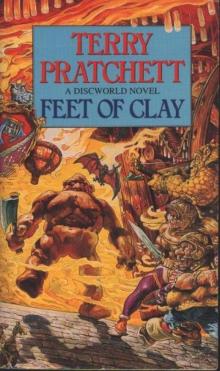 Feet of Clay
Feet of Clay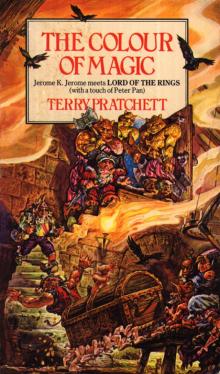 The Color of Magic
The Color of Magic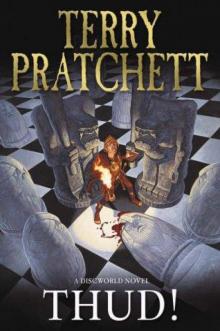 Thud!
Thud!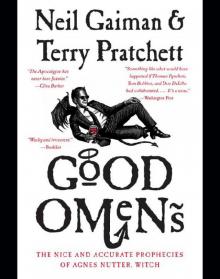 Good Omens: The Nice and Accurate Prophecies of Agnes Nutter, Witch
Good Omens: The Nice and Accurate Prophecies of Agnes Nutter, Witch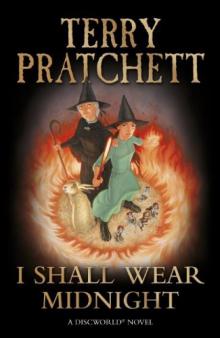 I Shall Wear Midnight
I Shall Wear Midnight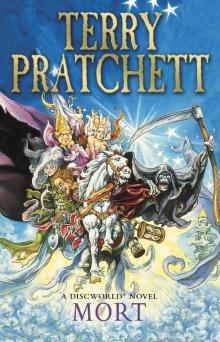 Mort
Mort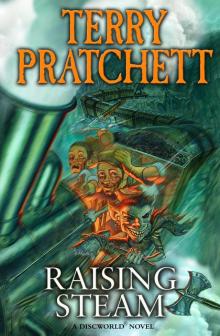 Raising Steam
Raising Steam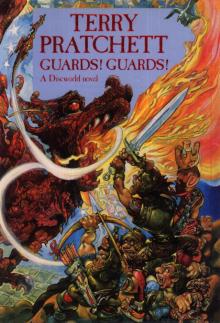 Guards! Guards!
Guards! Guards!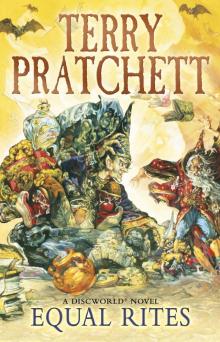 Equal Rites
Equal Rites A Hat Full of Sky
A Hat Full of Sky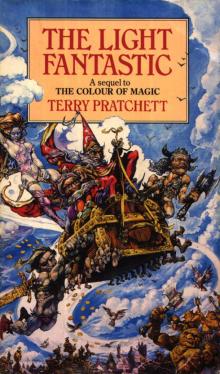 The Light Fantastic
The Light Fantastic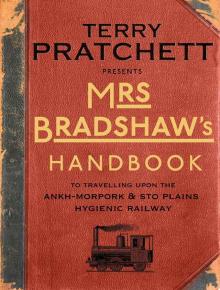 Mrs Bradshaw's Handbook
Mrs Bradshaw's Handbook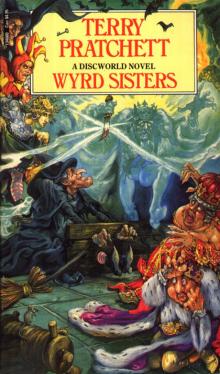 Wyrd Sisters
Wyrd Sisters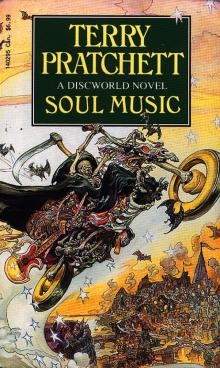 Soul Music
Soul Music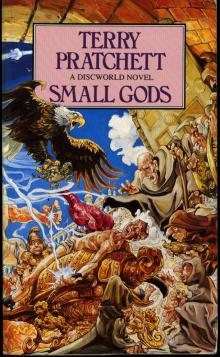 Small Gods
Small Gods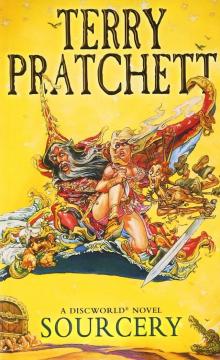 Sourcery
Sourcery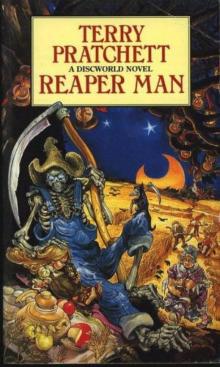 Reaper Man
Reaper Man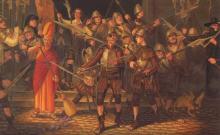 Night Watch
Night Watch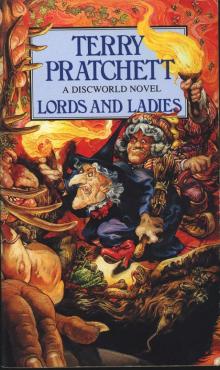 Lords and Ladies
Lords and Ladies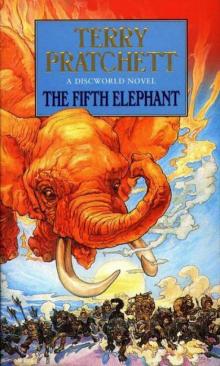 The Fifth Elephant
The Fifth Elephant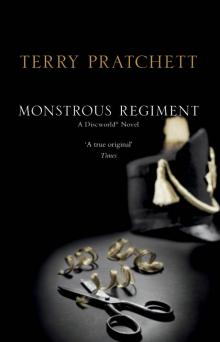 Monstrous Regiment
Monstrous Regiment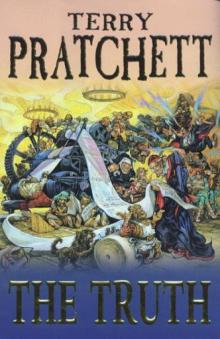 The Truth
The Truth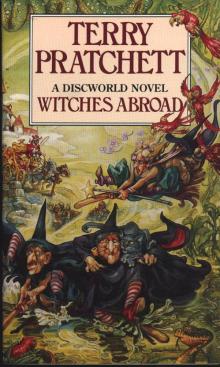 Witches Abroad
Witches Abroad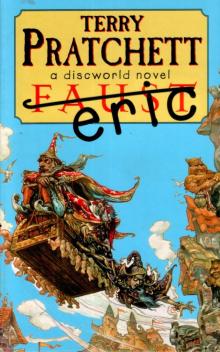 Eric
Eric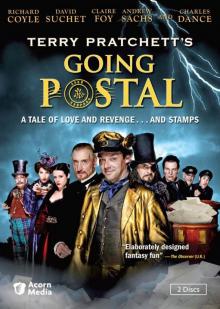 Going Postal
Going Postal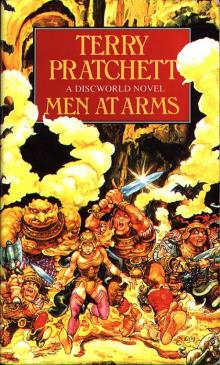 Men at Arms
Men at Arms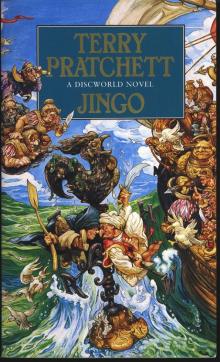 Jingo
Jingo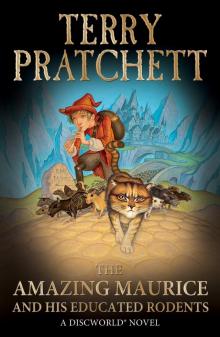 The Amazing Maurice and His Educated Rodents
The Amazing Maurice and His Educated Rodents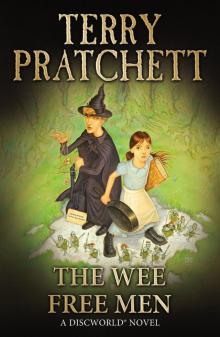 The Wee Free Men
The Wee Free Men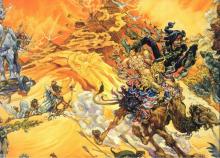 Pyramids
Pyramids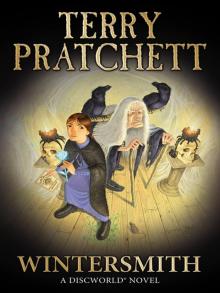 Wintersmith
Wintersmith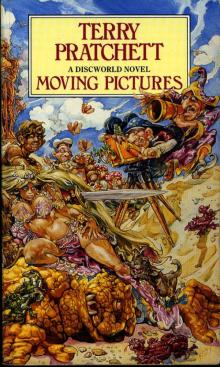 Moving Pictures
Moving Pictures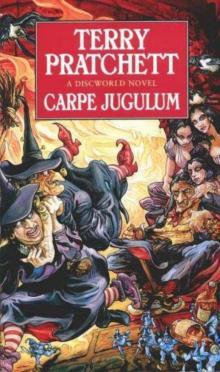 Carpe Jugulum
Carpe Jugulum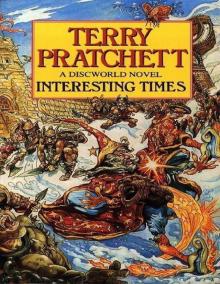 Interesting Times
Interesting Times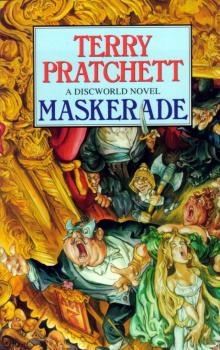 Maskerade
Maskerade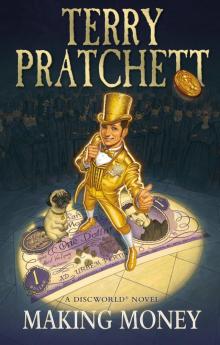 Making Money
Making Money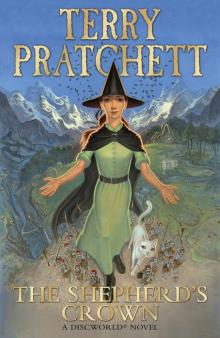 The Shepherd's Crown
The Shepherd's Crown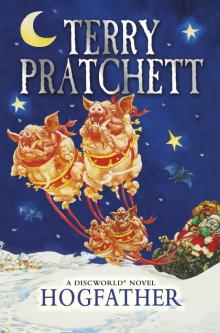 Hogfather
Hogfather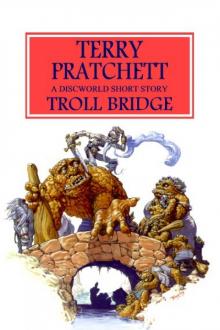 Troll Bridge
Troll Bridge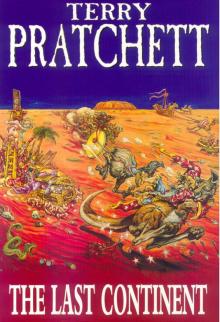 The Last Continent
The Last Continent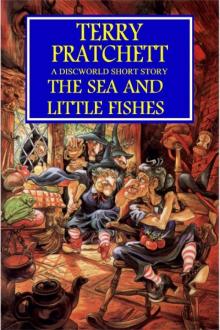 The Sea and Little Fishes
The Sea and Little Fishes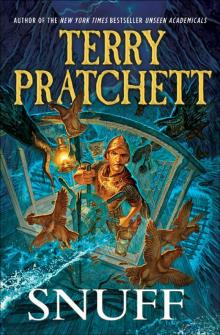 Snuff
Snuff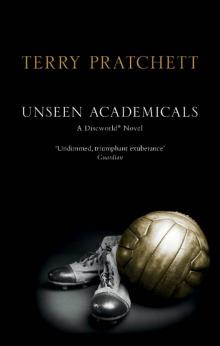 Unseen Academicals
Unseen Academicals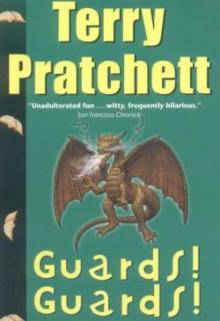 Guards! Guards! tds-8
Guards! Guards! tds-8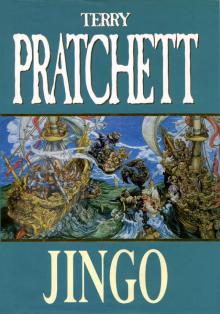 Jingo d-21
Jingo d-21 Turtle Recall: The Discworld Companion ... So Far
Turtle Recall: The Discworld Companion ... So Far The Fifth Elephant d-24
The Fifth Elephant d-24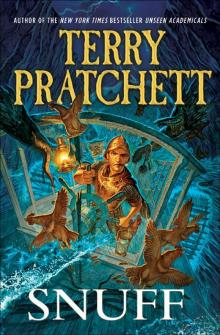 Discworld 39 - Snuff
Discworld 39 - Snuff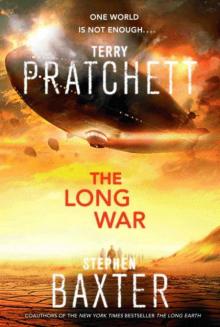 The Long War
The Long War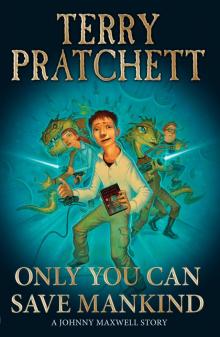 Only You Can Save Mankind
Only You Can Save Mankind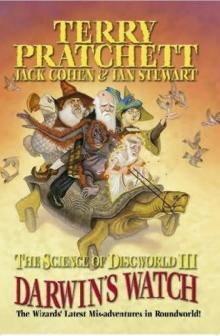 The Science of Discworld III - Darwin's Watch tsod-3
The Science of Discworld III - Darwin's Watch tsod-3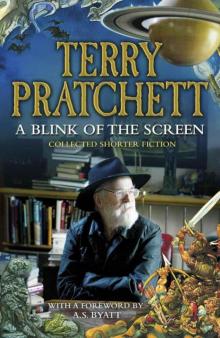 A Blink of the Screen: Collected Short Fiction
A Blink of the Screen: Collected Short Fiction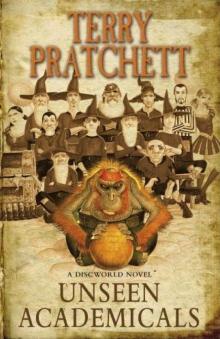 Unseen Academicals d-37
Unseen Academicals d-37 Wings
Wings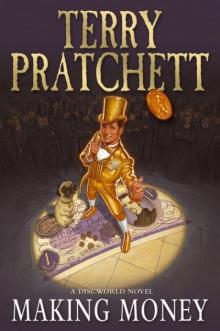 Making Money d-36
Making Money d-36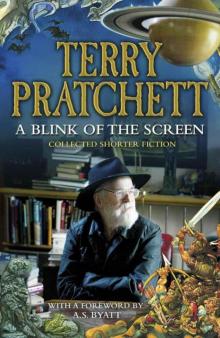 A Blink of the Screen
A Blink of the Screen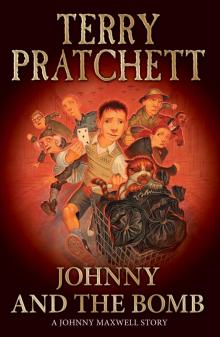 Johnny and the Bomb
Johnny and the Bomb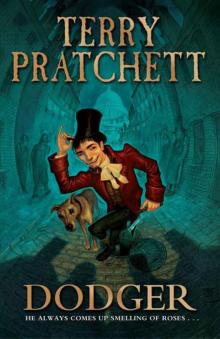 Dodger
Dodger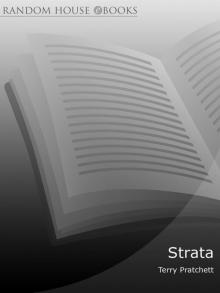 Strata
Strata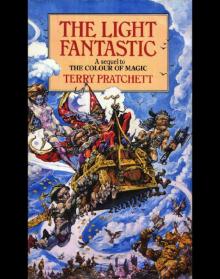 Discworld 02 - The Light Fantastic
Discworld 02 - The Light Fantastic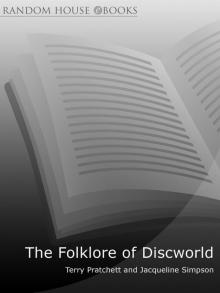 The Folklore of Discworld
The Folklore of Discworld The Science of Discworld
The Science of Discworld The Unadulterated Cat
The Unadulterated Cat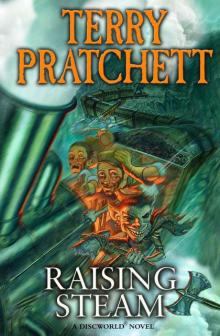 Raising Steam: (Discworld novel 40) (Discworld Novels)
Raising Steam: (Discworld novel 40) (Discworld Novels)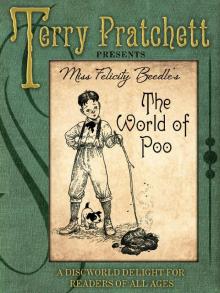 The World of Poo
The World of Poo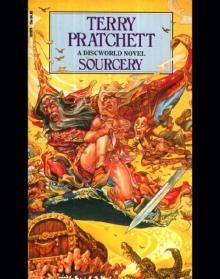 Discworld 05 - Sourcery
Discworld 05 - Sourcery The Witch's Vacuum Cleaner: And Other Stories
The Witch's Vacuum Cleaner: And Other Stories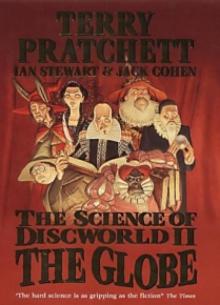 The Science of Discworld II - The Globe tsod-2
The Science of Discworld II - The Globe tsod-2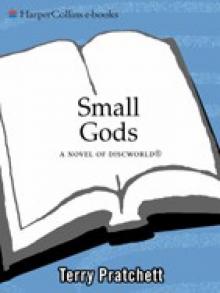 Small Gods: Discworld Novel, A
Small Gods: Discworld Novel, A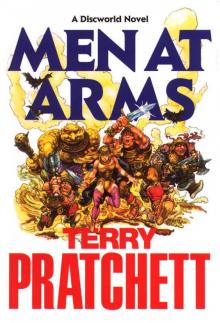 Men at Arms tds-15
Men at Arms tds-15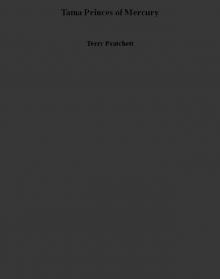 Tama Princes of Mercury
Tama Princes of Mercury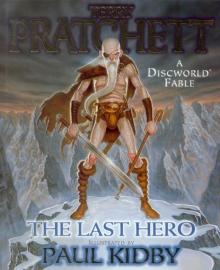 The Last Hero (the discworld series)
The Last Hero (the discworld series)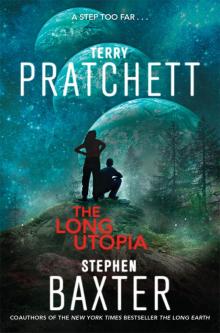 The Long Utopia
The Long Utopia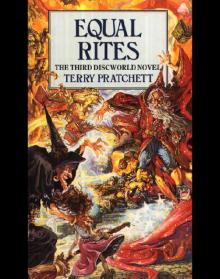 Discworld 03 - Equal Rites
Discworld 03 - Equal Rites Terry Pratchett - The Science of Discworld
Terry Pratchett - The Science of Discworld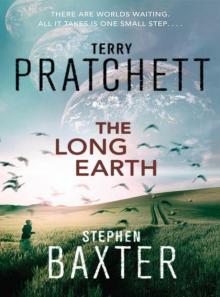 The Long Earth
The Long Earth The Carpet People
The Carpet People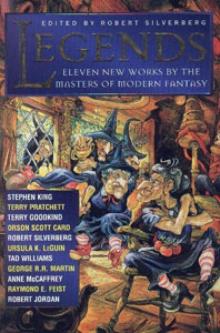 The Sea and Little Fishes (discworld)
The Sea and Little Fishes (discworld)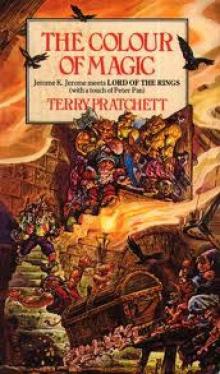 The Colour of Magic
The Colour of Magic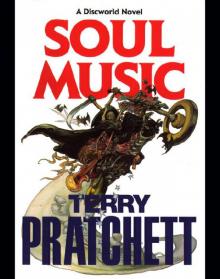 Discworld 16 - Soul Music
Discworld 16 - Soul Music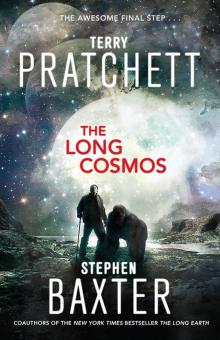 The Long Cosmos
The Long Cosmos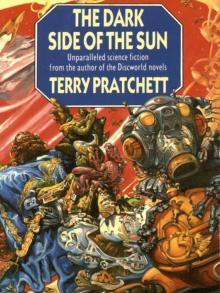 The Dark Side of the Sun
The Dark Side of the Sun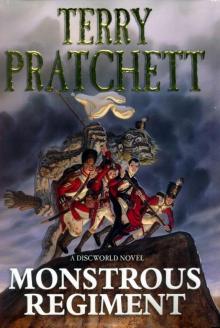 Monstrous Regiment tds-28
Monstrous Regiment tds-28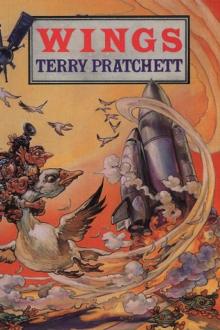 The Bromeliad 3 - Wings
The Bromeliad 3 - Wings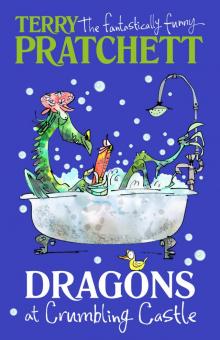 Dragons at Crumbling Castle: And Other Stories
Dragons at Crumbling Castle: And Other Stories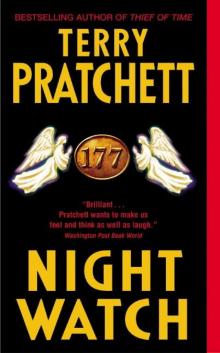 Night Watch tds-27
Night Watch tds-27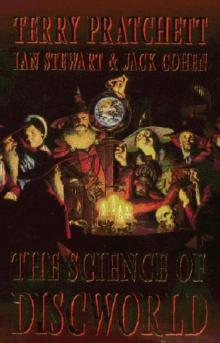 The Science of Discworld I tsod-1
The Science of Discworld I tsod-1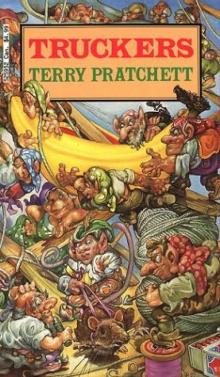 The Bromeliad 1 - Truckers
The Bromeliad 1 - Truckers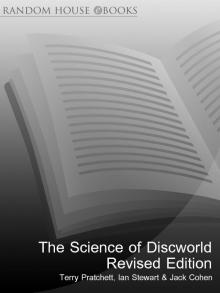 The Science of Discworld Revised Edition
The Science of Discworld Revised Edition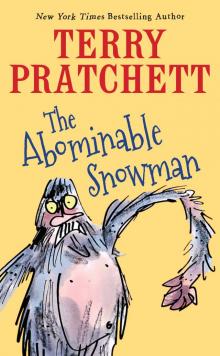 The Abominable Snowman
The Abominable Snowman Father Christmas’s Fake Beard
Father Christmas’s Fake Beard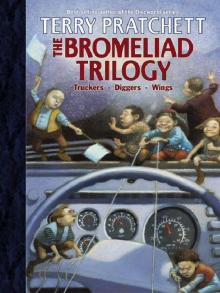 The Bromeliad Trilogy
The Bromeliad Trilogy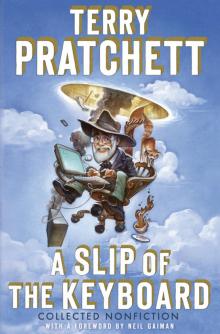 A Slip of the Keyboard
A Slip of the Keyboard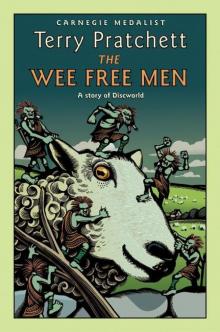 The Wee Free Men d(-2
The Wee Free Men d(-2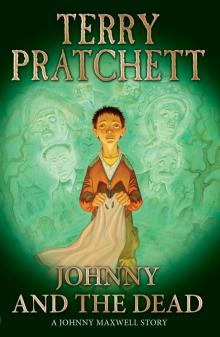 Johnny and the Dead
Johnny and the Dead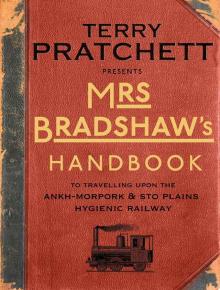 Mrs Bradshaw's Handbook (Discworld Novels)
Mrs Bradshaw's Handbook (Discworld Novels)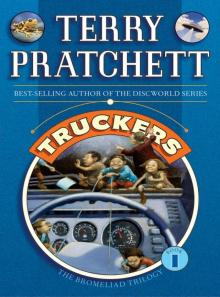 Truckers
Truckers The Amazing Maurice and His Educated Rodents d(-1
The Amazing Maurice and His Educated Rodents d(-1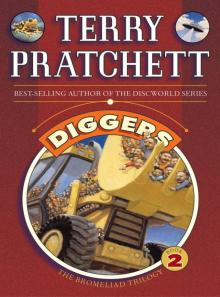 Diggers
Diggers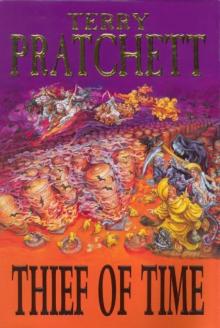 Thief of Time tds-26
Thief of Time tds-26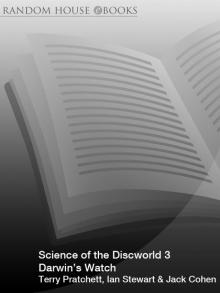 Science of Discworld III
Science of Discworld III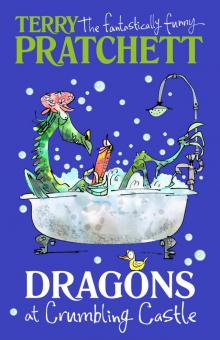 Dragons at Crumbling Castle
Dragons at Crumbling Castle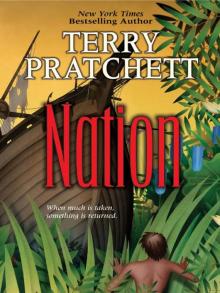 Nation
Nation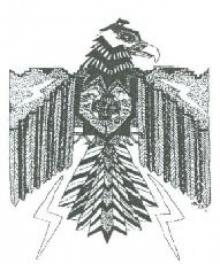 Darwin's Watch
Darwin's Watch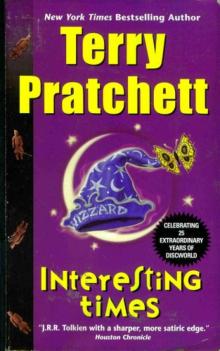 Interesting Times d-17
Interesting Times d-17 The Bromeliad 2 - Diggers
The Bromeliad 2 - Diggers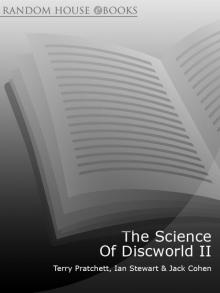 The Science of Discworld II
The Science of Discworld II